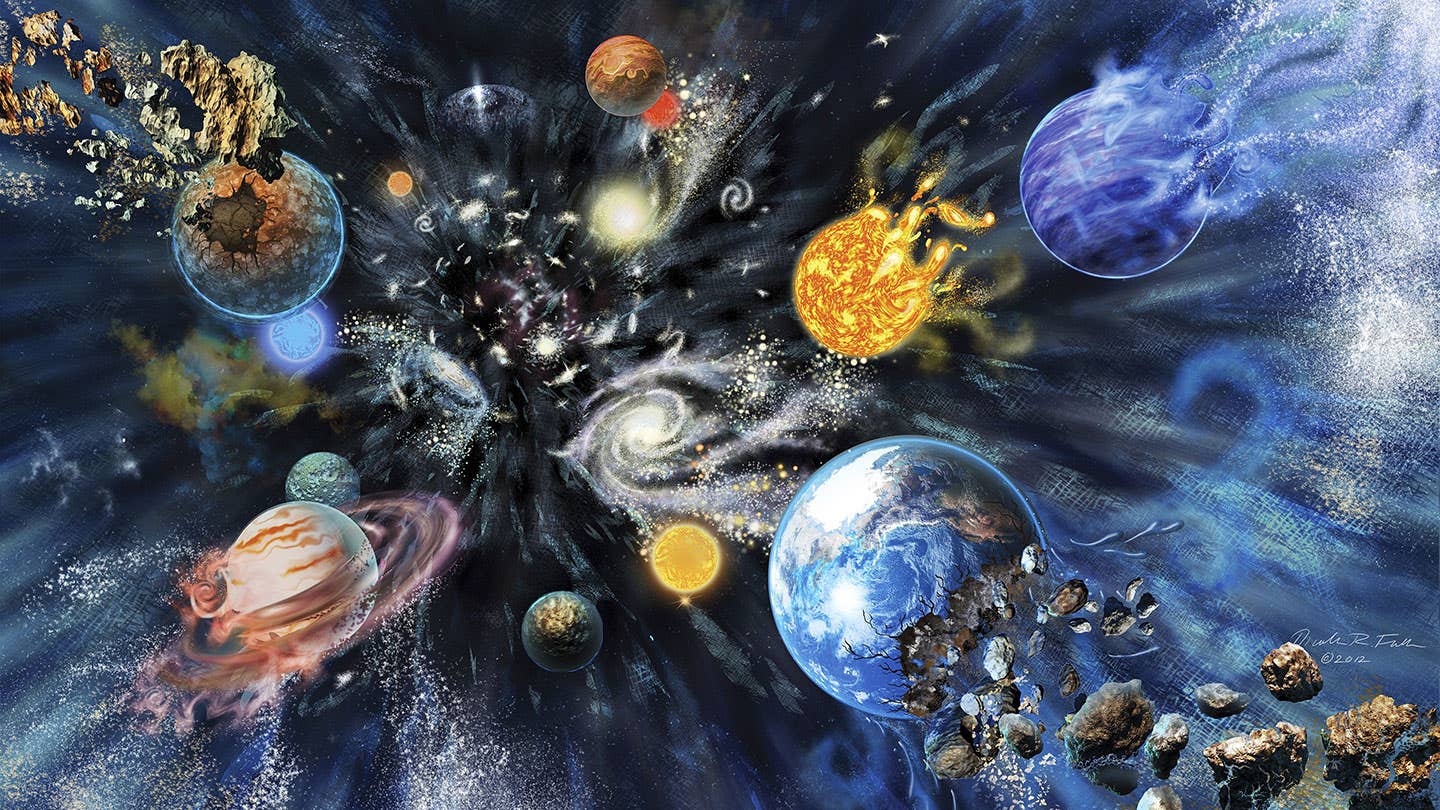Scientists predict the universe will die much sooner than expected
New research shows white dwarfs and neutron stars may vanish via gravitational decay, reshaping how we see the end of the universe.

The universe could end sooner than expected—thanks to gravitational decay. (CREDIT: Nicolle R. Fuller/Science Source)
As telescopes gaze into space, they also peer back in time. Starlight takes years—sometimes billions—to reach Earth, letting scientists trace the universe’s past. But what lies ahead for everything in space? That question has fascinated astronomers, and now, new research offers bold insights into the far future of stars, black holes, and even the Moon.
Not Just a Black Hole’s Fate
Decades ago, Stephen Hawking proposed a radical idea: black holes aren’t entirely black. Instead, they slowly lose mass by emitting particles—what we now call Hawking radiation. Over unimaginable stretches of time, this would cause them to evaporate. But for years, scientists believed this slow fade applied only to black holes.
That belief is now being challenged. A group of researchers from Radboud University in the Netherlands—Heino Falcke, Michael Wondrak, and Walter van Suijlekom—has reinterpreted Hawking’s concept. They found that other dense cosmic bodies, like neutron stars and white dwarfs, may also shrink away over time. “We did the calculations dead-seriously and with a wink,” said Falcke.
In earlier work, the same team argued that the intense gravitational pull of any compact object—not just a black hole—could split virtual particle pairs in the vacuum of space. This phenomenon, similar to what’s seen in the electric Schwinger effect, suggests that objects don’t need an event horizon to decay. The curved spacetime near them could do the trick. That means white dwarfs and neutron stars might also radiate away energy and mass over time.
How Everything Evaporates
The researchers used gravitational curvature radiation to estimate decay times. The results were surprising. While earlier studies suggested that white dwarfs might last up to 10^1100 years, this new analysis shrinks that timespan dramatically—to just 10^78 years. That’s still far longer than the current age of the universe, but it means the “final glow” of the cosmos could arrive much sooner than once thought.
What’s more striking is the finding that neutron stars and black holes decay at nearly the same rate: about 10^67 years. That seems odd, given that black holes have much stronger gravitational fields. But the difference comes down to a simple trait: surfaces. “Black holes have no surface,” explains Wondrak. “They reabsorb some of their own radiation, which slows down the process.”
Related Stories
In contrast, neutron stars do have a surface. When they absorb radiation like Unruh radiation—a theoretical heat felt by accelerated objects—they don't reflect it back into space. Instead, they give off blackbody radiation, pulling from their own gravitational energy. That means even dense stars that aren’t black holes might slowly release particles over time, eventually disappearing entirely.
A Rewritten Timeline for the Cosmos
The implications stretch far beyond a few odd stars. If this gravitational pair production truly applies across the universe, it changes the forecast for everything. The final fade of the universe could happen much earlier than previously believed. White dwarfs, which were once thought to be among the last survivors, are now expected to vanish well before reaching that 10^1100-year mark.
Even more fascinating is how decay time is linked to density, not just mass or size. This principle allowed the team to have some fun with their models. They calculated the evaporation time for smaller, familiar objects too. The Moon, for instance, would take about 10^90 years to disappear this way. A human being? The same.
Of course, no one expects these long-term decay processes to be a pressing concern. “There are other processes that may cause humans and the Moon to disappear faster,” the researchers note with a smile.
A Crossroads of Disciplines
This work didn’t come from just one field. It combines astrophysics, quantum physics, and mathematics. Professor van Suijlekom highlighted how blending these areas leads to breakthroughs. “By asking these kinds of questions and looking at extreme cases,” he said, “we want to better understand the theory, and perhaps one day, we unravel the mystery of Hawking radiation.”
That curiosity also led to revisiting old ideas. For example, textbooks by Shapiro & Teukolsky and by Birrell & Davies had already hinted that gravitational fields alone might produce particles—even without event horizons. And long before, Yakov Zeldovich and others speculated about processes like gravitational annihilation of matter, though without providing exact timelines. Now, with modern techniques and better models, the Radboud team has taken those ideas further.
One thought experiment also influenced their work: Unruh radiation. This effect shows that an accelerating object feels warmth where others feel nothing. If the surface of a cold neutron star accelerates through space, it might detect this thermal bath.
The source of that warmth? The star’s own gravitational energy. That would cause it to emit particles, slowly losing mass in the same way as a black hole. The line between what radiates and what doesn’t has become blurrier than ever.
What This Means for the Future
This research doesn’t just offer a forecast. It also deepens our understanding of fundamental physics. If gravitational decay can happen without an event horizon, it changes how scientists think about the fabric of space and time. It also raises questions about energy conservation and thermodynamics in the distant future.
While these cosmic countdowns span unimaginable timescales, they help us grasp where the universe is headed. Stars, moons, even people—all may have an expiration date written not just in atoms, but in gravity itself.
So the next time you look up at the night sky, remember this: everything shining now may someday fade—not in a bang, but in a long, slow whisper of disappearing light.
Research findings are available online in the journal arXiv.
Note: The article above provided above by The Brighter Side of News.
Like these kind of feel good stories? Get The Brighter Side of News' newsletter.



